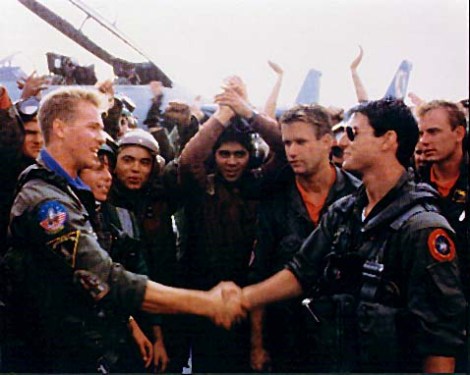(Maverick: I think we know who’s the ugly wingman here… Iceman: Yup, we most certainly do…)
This blog post will give you a hypothesis on how you can design your user experience towards an action you want a customer to take.
Time to read: 2 min.
Designing an optimal conversion funnel is an iterative process that requires a understanding of your target segments’ decision making processes. Aside from user experience best practices, I espouse is a diligent and consistent study in the field of behavioral economics. In this field, you’ll encounter just how irrational people (read: consumers) can be; Dan Ariely’s work in Predictably Irrational is a solid introduction to this field. I am also a student of Nassim Taleb, Richard Thaler, and Colin Camerer.
One of the key things for conversion marketers to come to terms with is that they need to make consumer preference, not take consumer preference. The distinction being, you should design your ideal outcomes into existing patterns of behavior, not around existing patterns of behavior. One good test that Dan Ariely illustrates in his TED talk “Are We In Control of Our Decisions?” regards to the design of form options. In the test, Ariely shows options for people to subscribe to The Economist. Cohort A was provided the following options:
- $59 – Online Subscription
- $125 – Print Subscription
- $125 – Online AND Print Subscription
If you were running The Economist, the largest value option is clearly where you’d want your users to subscribe to. Option 2 is clearly a lesser value than Option 3 (Option 2 is the ‘ugly wingman’; who’d want it?), but how did this effect results? In this scenario, 16% chose Option 1, 0% chose Option 2, and 84% chose Option 3.
In the second cohort, Ariely provided the following options:
- $59 – Online Subscription
- $125 – Online AND Print Subscription
The largest value option remains the same. But the results are markedly different: 68% chose Option 1, and 32% show Option 2.
Clearly, showing an ugly wingman option to the options served influenced consumer preference in a substantial way.
The Takeaway
I’ve been calling this “running The Ugly Wingman option.” The decision making process of your customers isn’t simple. The cognitive trap most marketers fall into is an expectation of rationality. If you’re designing your options, pit your hypothesis on the highest value option/outcome to your customers and pit it with an ugly wingman. What you may find is that you can make consumer preference, not simply take consumer preference. The results of which can be quite pretty.

